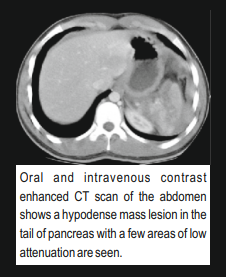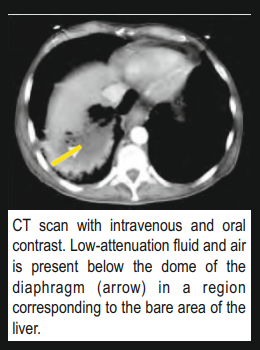The palatable Oral Contrast Media
- Excellent contrast
- Excellent palatability
- High fluidity
- Shortened passage through G.I. Tract
- Multiple administration
- Leaves no deposit or opaque residue
- No absorption by mucosal membrane
- No break in continuity
- Availability
- Excellent contrast
- Excellent palatability
- High fluidity
- Shortened passage through G.I. Tract
- Multiple administration
- Leaves no deposit or opaque residue
- No absorption by mucosal membrane
- No break in continuity
- Availability

IOGASTRO does not endanger the patient even where there is :
- Well founded suspicion of a complete intestinal obstruction.
- Pyloric stenosis.
- Risk of perforation or leak.
- Acute haemorrhage.
- Megacolon.
| COMPOSITION | FORMULA |
|---|---|
| IOGASTRO is an aqueous solution of Meglumine & Sodium Diatrizoate with added flavouring agent and a wetting agent | Meglumine Diatrizoate 66 % w/v Sodium Diatrizoate 10 % w/v Iodine Concentration 370 mg/ml (In a flavoured aqueous base) |
| IOGASTRO is an aqueous solution of Sodium Diatrizoate with added flavouring agent and a wetting agent | Sodium Diatrizoate 41.7 % w/v Iodine Concentration 249.64 mg/ml (In a flavoured aqueous base) |

"IOGASTRO is employed primarily when the use of barium sulphate is unsatisfactory, undesirable or contraindicated"
“In combination with IOGASTRO, barium sulphate loses it's tendency to thickening and remaining in the intestine. Combined administration of IOGASTRO and barium sulphate is therefore especially indicated in weak, elderly patients or those having tendency for Constipation"
TOLERANCE
Normally the alimentary tract absorbs only minimal amounts of IOGASTRO and there are no systemic effects follow its use. When IOGASTRO alone is used without the addition of barium sulphate, the hyper tonicity of the high concentration solution may occasionally give rise to diarrhoea, but this ceases as soon as the intestine is emptied completely. Because of its high osmotic pressure and a minimal tendency for absorption from the intestine. IOGASTRO should not be administered to infants in higher doses than those recommended. If there is a definite indication for an investigation with oral contrast in dehydrated infants, appropriate measures for correcting electrolyte and water balance must be taken prior to the investigation.
TECHNIQUES OF EXAMINATION AND DOSAGE
IOGASTRO alone
Oral Administration
The dosage is dependent on the type of examination and the age of the patient. In adult patients and children of 10 years of age and over, 60 ml is sufficient for visualization of the stomach. For a follow-through examination of the gastrointestinal tract maximum of 100 ml may be required. For elderly and cachectic patients a dilution with water in the proportion of 1:1 is recommended. In children up to 10 years of age, 15 to 30 ml are generally sufficient. This dose can be diluted with water in the proportion of 1:1. For Infants and debilitated small children it is recommended that the contrast medium be diluted with water in the proportion of 1:2
Rectal Administration
For adult patients the contrast medium should be diluted with 3 to 4 times its volume of water. In general, unlike barium sulphate enema not more than 500 ml of this diluted IOGASTRO solution is required. For children over 5 years of age the contrast medium should be diluted with 4 to 5 times its volume of water, for children upto 5 years of age a dilution with water in the proportion of 1:5 is recommended
Combination of IOGASTRO with Barium Sulphate
In adult patients a ratio of approximately 30 ml IOGASTRO to the usual dose of barium sulphate has proved most satisfactory. In children up to 10 years of age, 10 ml IOGASTRO may be added to the barium, In children up to 5 years of age, a ratio of 2 to 5 ml IOGASTRO to 100 ml barium sulphate has proved of value. If necessary ( in cases of pylorospasm or pyloric stenosis ) the solution may be further diluted.
This does not affect the contrast. Exposures of the stomach are taken in the usual way whether IOGASTRO alone is used or in combination with barium sulphate. The time taken for emptying of the stomach is same as for the barium, whereas that for filling of the intestine is shorter. When IOGASTRO alone is used as the contrast medium it generally reaches the rectum after 2 hours, while IOGASTRO and barium sulphate mixture may take up to 3 hours and, in individual cases, longer, if filling is delayed. The extent of this delay and the site of obstruction may possibly give valuable diagnostic hints to the colon function. The most favorable time for taking exposures of the colon is indicated by the urge to defecate which all patients experience when the contrast medium reaches the
IOGASTRO left over in an opened bottle can be kept for reuse at a later stage provided the bottle is properly closed.
Computerized Tomography of the abdomen
IOGASTRO is used for the prevention of artefacts caused by air in the gastrointestinal tract. Demarcation of adjacent organs such as the pancreas in the scan picture has also been obtained. 500 - 1500 ml of diluted IOGASTRO solution (about 3 %) is given orally.
ADVANTAGES
The use of IOGASTRO does not endanger the patient even in case of intestinal obstruction or pyloric stenosis nor when there is a risk of perforation or leakage. No damage is done if IOGASTRO enters the peritoneal cavity, it creates no problem for surgeon and moreover can be easily removed by suction. In cases of partial stenosis the fluidity of IOGASTRO is of special importance, since it enters the narrowest passages and renders them visible. An addition advantage is that there is no danger, as with barium, that a partial block is made complete as a result of concentration of the contrast medium. Since the aqueous solution of IOGASTRO leaves no deposit or opaque residue endoscopy can be performed immediately after the radiological investigation. In cases of acute haemorrhage IOGASTRO, while outlining the mucosal pattern, flows around the blood clot and make it possible to locate the site of the haemorrhage
IOGASTRO is excellently tolerated by the tissues. Since it is readily absorbed by all tissues except by the mucous membrane of the gastrointestinal tract, it is an ideal contrast medium for visualization of gastrointestinal fistulas. In urgent cases the whole gastrointestinal tract can be examined radiologically in a very short time and the site of any obstruction can be found, without significantly delaying surgery.
In combination with barium the routine follow-through examination can also be carried out more rapidly, with transient yet complete filling of the whole intestine in its final stage. This gives a homogeneous visualization of the colon similar to that obtained with a barium enema. Filling defects and structures of the colon are thus better shown by this method than with the usual barium meal follow-through.
CONTRAINDICATION
There are no absolute contraindications. Caution is necessary in deseases of the thyroid, particularly hyperthyroidism, and in infants. Patients with enteritis or colitis may experience a transitory worsening of their symptoms
PRECAUTIONS
If for diagnostic or therapeutic reasons, iodine isotopes are to be used following Xrays examination. It should be born in mind that after the administration of iodine containing contrast media, the capacity of the thyroid tissues to take up iodine is reduced for 8 to 10 weeks or longer
PRESENTATION
IOGASTRO: Bottle of 30 ml & 100 ml
STORAGE
Store at controlled room temperature 20ºC to 30ºC. Do not freeze. Protect from direct sunlight and secondary X-rays.
